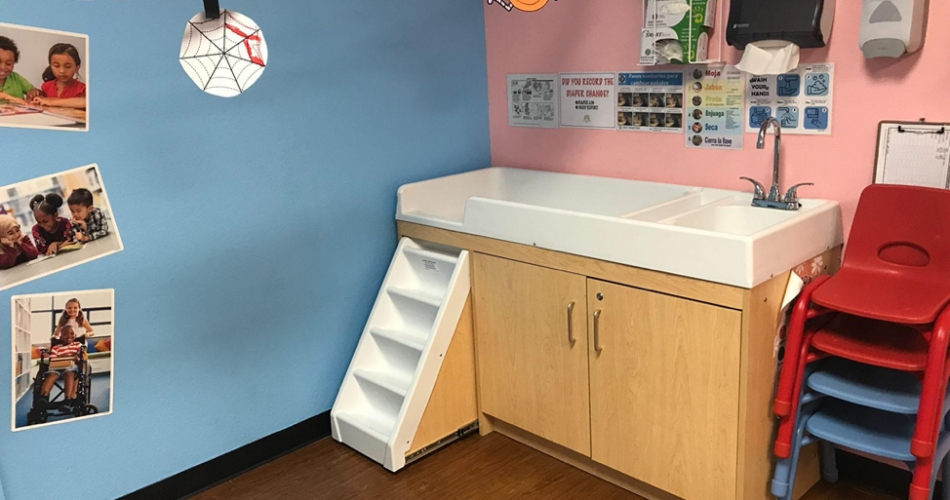Early educators understand that every child is unique and that development doesn’t adhere to a strict timetable. But there’s one developmental milestone that comes with a lot of expectations—learning to use the toilet. Families and caregivers alike often feel pressure for children to meet this milestone by their third birthday. The reality, as many early educators know, is that some children need extra time and support.
At the same time, many preschool classrooms aren’t set up to support children in diapers or training pants. And many programs require children to be able to use the toilet independently to enroll in the preschool room. But it doesn’t need to be this way.
Summer Palacios is the owner and director of Promesas de Esperanza Child Care, a center-based program enrolled in Quality First in the First Things First Northwest Maricopa region. First Things First is Arizona’s early childhood agency, and funds Quality First to help early care and education providers improve the quality of their programs.
We recently caught up with Palacios, who came up with a simple yet transformative solution to this challenge. She added a changing table to her three’s classroom.
Tell us about your decision to add a changing table to your three’s classroom.
For our program, it was just the right thing to do, and I’m so glad we did it. There are three main reasons we did.
- It’s best for the children’s development. Before this, our three year olds that were in diapers or pull-ups would stay in the two’s classroom. To me, that’s not fair. The way I see it, if they are three, they deserve to be in a three-year old class. They deserve curriculum with learning activities for their age level.
- It allows us to serve more families. Our center has a waiting list. Adding a changing table in our three’s room allowed us to move three children from our two’s classroom to our three’s classroom. That opened up three spots in our two’s classroom. So, we increased our enrollment and moved those families off the waiting list.
- It supports the children’s toilet learning. From my experience, this really helps those children who aren’t using the toilet on their own yet. When a child is in a classroom where the other children use the toilet, they see that as the norm. When they see their friends doing it, it’s usually not long before they are too.
When adding a changing table, what was the process like? What were the licensing requirements you needed to consider?
It was actually pretty straightforward. I worked with my Arizona Department of Health Services (ADHS) Compliance Officer to make sure everything we did met licensing requirements. For the changing table, we needed to have a separate sink with hot water for handwashing. We chose an all-in-one unit that had a changing table with a sink attached. The room had plumbing for hot water already, so all that was needed was to connect to that plumbing for the sink.
What would you tell a colleague who is considering this?
I would say do it! It is really not that complicated, and it makes a world of difference for those families. Our families are so grateful to have their children in a room with their same-age peers.
Considering adding a changing table to your preschool room? Contact your Compliance Officer to ensure licensing rules are met.
To learn more about ADHS licensing requirements for diaper changing, view the Child Care Rules.
Additional Resources:
For more tips and resources on toilet learning, check out these editions of the Arizona Early Childhood Career and Professional Development Network Newsletter:
At Quality First, we love to hear from you! Share your new and innovative practices so others can be inspired. Email us at QualityFirst@FirstThingsFirst.org.
